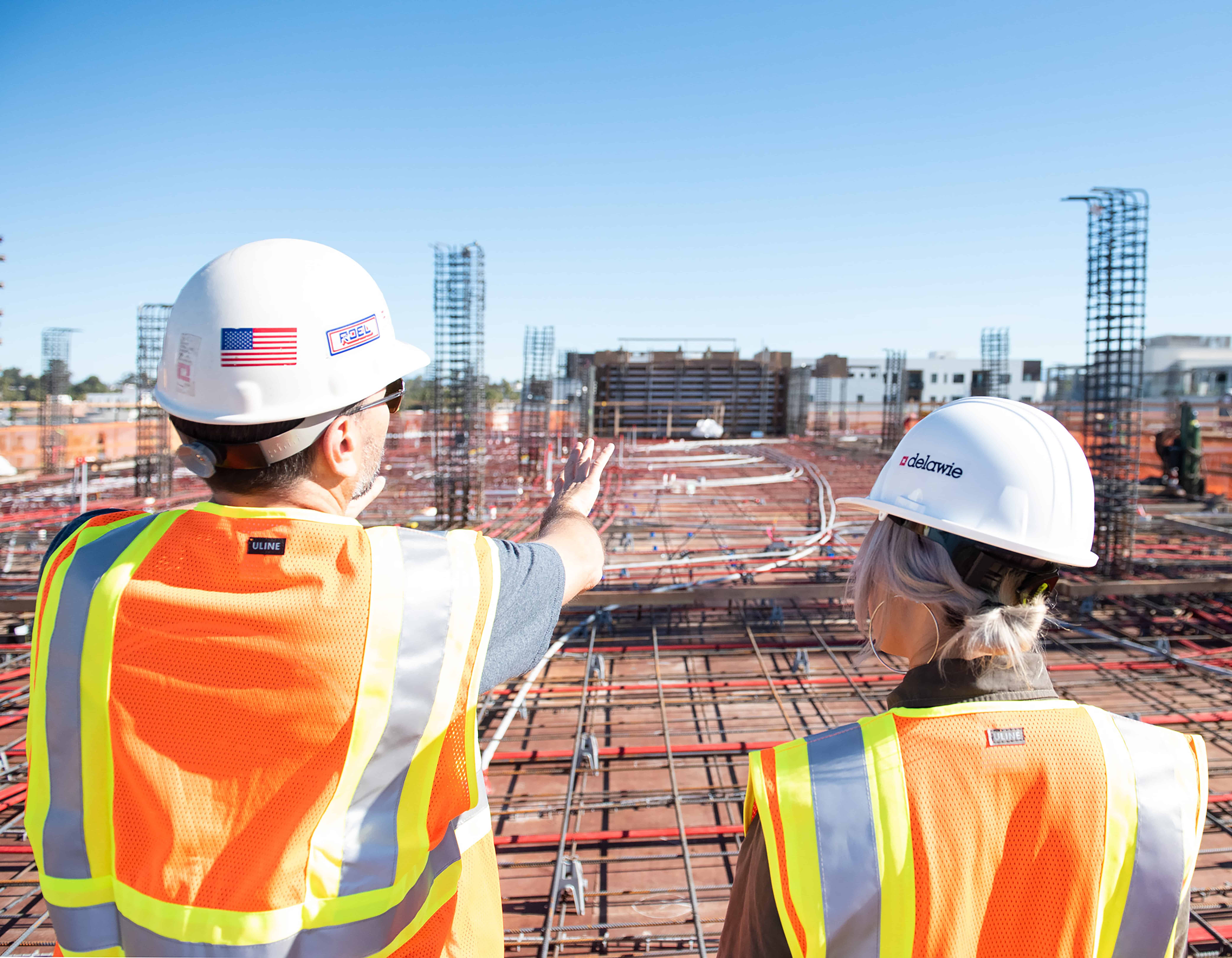Construction employers and their new hires can benefit immensely from an effective onboarding program. Onboarding is a structured socialization process that helps workers assimilate to new jobs and can relieve anxiety, increase productivity and retention, and lead to a safer workforce. Even the smallest construction companies can implement a successful onboarding program and reap its benefits.
Onboarding is more than a first day explanation of company expectations and procedures. It begins on day one and continues for weeks – or even months – to positively connect employees to their organization. Peers, supervisors and management are crucial to a successful onboarding program.
Talent shortage is a fact of life for construction companies and is expected to continue into the future (See our blog, Addressing the Talent Shortage in U.S. Construction & Manufacturing). The construction industry is unique due to small firm size, multiple work sites, short project durations, seasonal work and a diverse workforce. Improved worker productivity, retention and safety are more important than ever. Forward-thinking construction firms use onboarding to set themselves apart and better achieve their goals.
The Four Cs of Onboarding*
- Compliance – Employee learns basic legal regulations and policy rules
- Clarity – Employee learns specific details about their role and responsibilities
- Connection – Employee forms personal relationships and communication networks within the organization
- Culture – Employee learns the formal and informal norms of the organization
Although Compliance and Clarity are usually achieved before Connection and Culture, Connection is the most important because it fosters the other three. In smaller construction firms, conscientious and well-trained foremen are critical to successful onboarding because they can positively influence all four Cs.
Suggestions for Your Onboarding Program
Employee turnover in the construction industry has traditionally exceeded other industries. Young and inexperienced construction workers suffer more injuries than their experienced counterparts. Specific data on construction companies does not exist, but research indicates companies that focused on onboarding had 91 percent retention in the first year versus 31 percent for those that did not. Better retention leads to increased productivity. Experienced and committed employees generally work better, faster and safer. Here are some essentials to consider when developing your own onboarding program:
- Compliance – Require OSHA 10-hour construction training (less than $100).
- Clarity – Provide an employee handbook. The handbooks should detail safety expectations, employee responsibilities, job descriptions and consequences of violations.
- Connection – Assign a coach to each new employee (or foreman in smaller firms). The coach/foreman should be competent, trusted and possess good people skills.
- Culture – Practice what you preach. Organizational norms are established over time through actions observed in the work environment. Commitment from all levels, especially top management, is crucial. Work safety must be an observable core value.
Onboarding Best Practices*
- Effective Recruitment – Onboarding is an extension of the recruiting process. Successful onboarding minimizes turnover by providing new hires with realistic job expectations, particularly regarding the physical nature of the job, exposure to the elements and safety concerns.
- Special First Day – First impressions are vital, so make sure your new hire is warmly welcomed, provided with all necessary equipment and permissions and assigned a coach (or foreman in the case of smaller firms).
- Overcome Language Barriers – All onboarding materials and instructions – written and oral – must be communicated in a worker’s native language. Effective communication is key to understanding, especially with immigrant workers and others who don’t speak English fluently.
- Recognize Cultural Differences – New hires may have differing perceptions of authority and risk taking, and deficient knowledge regarding social norms and administrative processes. Don’t assume your new employee understands. Allot extra time and effort to address and resolve cultural differences.
- Use Technology – Technology may provide low cost solutions. OSHA’s online 10-hour construction training, available in English and Spanish, can save you money versus the cost of traditional instructor-led training.
- Design a Formal Onboarding Plan – A written onboarding plan ensures consistency, outlines a timeline for milestones and addresses details that may get overlooked in the absence of a written plan.
- Involve All Company Levels – Onboarding success in communicating culture depends on commitment and teamwork from all levels of the organization.
- Provide Jobsite Orientation – This is the most fundamental part of training and the greatest value of all safety training. All new employees, regardless of prior experience, should participate in jobsite orientation.
- Review Progress – Establish a timeline (e.g. 30, 60, 90 days) to review progress and discuss concerns.
An effective onboarding program formally communicates expectations, instills a sense of connection and positively establishes organizational values. In the face of a challenging talent shortage, construction firms need a competitive edge to retain quality employees. Onboarding is a smart choice for increasing employee retention and safety.
* Taylor, Edward L. Onboarding Construction Workers: Advantages in Retention and Safety. White Paper, November 2015.



